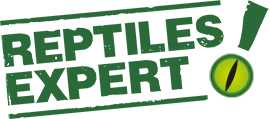We use cookies to make your experience better. To comply with the new e-Privacy directive, we need to ask for your consent to set the cookies. Learn more.
Why natural solar radiation is often incorrectly assessed and why we have too little light, UVB and heat in the terrarium
The reason for this blog are many conversations that I have had with turtle owners in Central Europe. I was often told: “In summer - when it's nice and warm here - my animals are in the garden. When it gets cold, hibernation will come anyway."
Let's take a closer look at this statement. The animal in question is the Greek tortoise (testudo hermanni). In the natural habitat of this reptile, solar radiation over the year is over 200 watts / m². That is an impressive 80% more than in Germany (110 watts / m²). The summer in Central Europe is easy to describe in comparison to the Mediterranean region: too short, too humid and too cold (I thank a good friend for this quote). Our reptile friends are cold-blooded animals and therefore a sufficiently high temperature and light intensity (including UV light) is essential for survival. Warmth and light are the fuel for our reptiles. In the case of turtles in the garden, this can easily be ensured by a plexiglass raised bed (e.g. Alltop) with UV lighting in the sun spot.
The hours of sunshine and the intensity of the sun here (in Central Europe) simply cannot be compared with the natural habitats of many reptiles (global radiation):
- Germany 110 watts / m²
- Austria 130 watts / m²
- Italy 160 watts / m²
- Greece 200 watts / m²
- North Africa 280 watts / m²
Due to too low temperatures and a cold and wet environment, the animals do not reach the necessary body temperatures, cannot digest the food and are extremely susceptible to diseases (especially liver damage). The important UVB radiation for vitamin D3 production is of course much lower in our latitudes.
For reptiles kept in terrariums there are therefore good rules of thumb for the wattage per square meter. Here, too, everything depends on the natural habitat of the animal. Rainforest dwellers should receive around 150 watts / m² and desert and savannah animals around 200 watts / m². Of course, the distance from the lamp to the animal and the size of the animal also count here in the sun place. The whole body should be covered by the cone of light. Depending on the height of the terrarium, this recommended value will be slightly higher or lower (Akeret, 2015).
For a bearded dragon terrarium with a base area of 150 x 70 cm, 2 compact lamps and a fluorescent tube are not enough. There should already be 3 x 70 watt UV metal halide lamps (HID) hanging. Or at least 2 x 70 watt UV-MD lamps and possibly a high-quality fluorescent tube or LED bar as basic lighting.
My final recommendation: It is best to find out more about the keeping conditions in the literature before purchasing an animal. There are excellent clubs (DGHT in Germany, ISV and HTVÖ in Austria) that are always ready to answer questions. Never underestimate the warmth and light needs of reptiles.
I am happy to answer any questions about UV light in the terrarium.
Best regards from Vienna,



